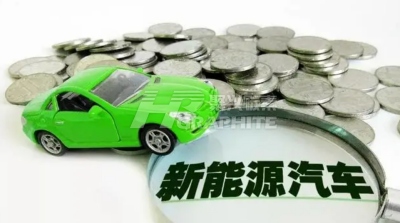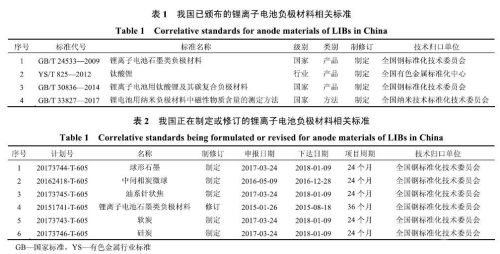【Negative Electrode】2024 China's Negative Electrode Material Market Analysis and prediction

【Negative Electrode】2024 China's Negative Electrode Material Market Analysis and prediction
Benefiting from the growth of domestic and foreign terminal markets such as new energy vehicles, China's lithium battery related industry is developing rapidly, and the demand for negative electrode materials in the market is increasing. The shipment volume of negative electrode materials for lithium batteries in China in 2022 was approximately 1.433 million tons, a year-on-year increase of 84%. Due to the impact of graphite export controls, the shipment volume will continue to grow in 2023 but the growth rate will slow down, reaching 1.67 million tons and 1.89 million tons in 2024.
At present, graphite is the main negative electrode material for lithium batteries in China, with artificial graphite accounting for the highest proportion. In 2022, artificial graphite accounted for 84% of the negative electrode materials for lithium batteries, while natural graphite accounted for 15%. Negative electrode material is produced with graphitized petroleum coke for more information...

1. A favorable development environment with policy encouragement and support
In recent years, the firm development of new energy vehicles has become a consensus among global policy and enterprise levels. Both domestic and foreign governments have introduced stimulus policies for new energy vehicles, and strict carbon emission assessments have been formulated. It is expected that the sales of new energy vehicles will continue to increase significantly in the future, and the demand for upstream materials will continue to expand. The Chinese government has intensively introduced multiple industrial support policies to promote the development of the new energy vehicle industry. The Guiding Opinions on Promoting the Development of the Energy Electronics Industry and the Notice on Doing a Good Job in the Coordinated and Stable Development of the Lithium ion Battery Industry Chain and Supply Chain have been successively issued, reflecting the strong support and attention of our country to the new energy vehicle industry. This has had a positive and far-reaching impact on the development of the lithium battery industry, providing relevant enterprises with opportunities for leapfrog development.
2. Downstream industry technology iteration is rapid,
and application fields are constantly expanding.
The technology update and iteration in the field of lithium batteries are rapid, constantly expanding new application areas, and further promoting the significant growth of the application market scale. In the coming years, the penetration rate of lithium batteries in emerging fields such as electric trucks, electric forklifts, and electric ships will further increase, thereby driving up the demand for lithium battery related materials in the market.
3. The shipment volume of silicon-based negative electrode materials
is rapidly increasing, and the industrialization process is accelerating.
With the continuous progress of lithium battery technology and the further expansion of downstream lithium battery application fields, negative electrode material manufacturers need to continuously upgrade their technology and process, develop new products, and meet the needs of different types of application scenarios and markets. At present, the specific capacity performance of graphite materials is gradually approaching theoretical values. In order to further improve the energy density of power batteries, new negative electrode materials are actively being developed. Among them, silicon-based materials are expected to become the mainstream direction for the development of next-generation negative electrode materials due to their extremely high energy density, low delithiation potential, and relatively excellent safety performance. As the technology of high nickel ternary materials NCM811, NCA, and other supporting materials gradually matures, the system of silicon carbon negative electrode paired with high nickel ternary materials has become the future trend of lithium battery development, and silicon carbon negative electrode materials are gradually moving towards industrialization.

There are four major changes in the field of negative electrode materials:
One is that the pressure of cost reduction has not decreased. Affected by changes in supply, the price of negative electrode materials will continue to decline in 2023, and cost and price have become the main theme of market competition. By reducing costs through economies of scale and promoting integrated project construction, it has become an inevitable choice for leading negative electrode material enterprises to build high competitive barriers. In 2024, prices are expected to show a stable but declining trend.
The second is that the utilization rate of production capacity shows a "head to tail" differentiation state. Data shows that in 2023, the total production capacity utilization rate of the top 6 negative electrode enterprises exceeded 70%, while the average total production capacity utilization rate of enterprises in the top 7 and beyond was less than 30%. Due to high market concentration and high operating costs, most cross-border enterprises are in an awkward situation of production or shutdown.
The third is to tap the potential of new negative electrode products and create new market growth. The fast charging market for whole vehicles is heating up, and new battery tracks such as 46 series large cylinders, sodium ions, and semi-solid batteries are emerging. The demand for fast charging negative electrodes, silicon-based negative electrodes, and hard carbon negative electrodes is rising, and leading negative electrode enterprises with new product and technological advantages are further widening the leading gap.
The fourth is to accelerate overseas production expansion. Expanding overseas production capacity is also a trend in 2023, with negative electrode head negative electrode enterprises represented by Shanshan Technology and Putai taking the lead in laying out plans for overseas production capacity construction. For more market guidance on negative electrode materials, feel free to contact us at any time.
No related results found








0 Replies